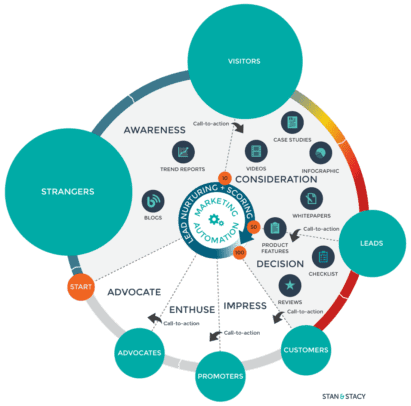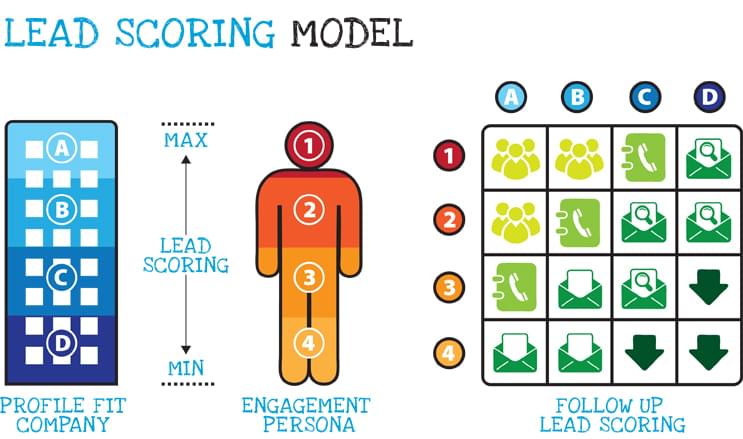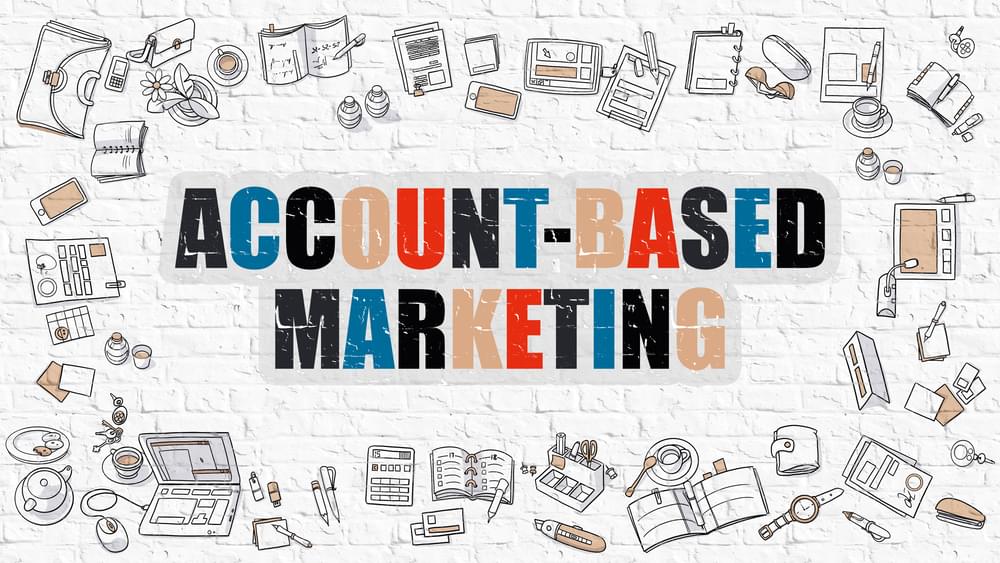What Is Lead Scoring?
Lead scoring is a process in which a score, based on value-assigned criteria, is given to prospective customers or clients based on their predicted potential willingness to buy. The criteria, whose individual scores are weighted relative to their likelihood to indicate business interest, encompass the behavior, demographic identity and expressed preferences of the lead. The ability to accurately score a lead offers the potential to determine the likeliest sales prospects and funnel them to your Sales team, which could improve their close rate and even their sale sizes.
What is a lead? A lead is a qualified prospect with potential to buy. Traditionally, lead quality is determined by a Marketing department after evaluating their profile. Therefore, a lead score - these days often handled by marketing automation software - measures the lead's perceived value to the company. Below a certain lead score, the prospect may require further nurturing; above a certain score and they’ll be forwarded to the Sales team.
For many companies, more leads come online than offline; either way, for a company with an online presence and many incoming leads, lead scoring is an effective method for sifting through the quantity of online visitors and determining which leads are qualified and when and how they should be pursued.
Do I Need a Lead Scoring Model?
Not all companies require lead scoring software. Lead scoring is most useful to a company whose Sales team faces enough leads that pursuit of some come at the expense of others. At this point, a lead scoring model is a highly effective tool to determine which leads are most profitable to pursue.
In absence of these circumstances, and if your Sales team can effectively address the existing inflow of leads, you may benefit from further lead generation strategies. Lead generation may take the form of advertising, email newsletters, content marketing and optimizing for search engine results. It occurs at the beginning of the lead life cycle; after lead generation comes lead nurturing, during which a lead score can be attributed (and adapted) as more information becomes known.

Of course, having more leads than you can handle isn’t necessarily a bad thing, unless your Sales team feels they aren't being given the highest quality of those leads. If the Sales department complains about bad leads, this also demonstrates a need for lead scoring functionality to parse through them.
In order for leads to be analyzed, you must collect data on their profiles and activity. You’ll need lead tracking and intelligence tools - software for tracking and managing email marketing, customer interactions and website activity, as well as for content management of blogs, landing pages and email templates. Customer data and industry activity can also be gleaned from social media and search engine results. Your company likely already has a CRM platform; marketing automation and social media tracking tools are among some of the most useful integrations your CRM software should have. If your company lacks a CRM, you might consider providers such as Infusionsoft, NetSuite, Zoho CRM, which offer built-in marketing automation tools. These tools can yield highly specific information about your leads and enable you to differentiate which characteristics warrant a high score.
If you are unsure how to evaluate different CRM platforms, consult our Beginner's Guide to Understanding 3 Types of CRM. If you are shopping for a CRM, check out our CRM Comparison Guide.
How Do I Score a Lead?
Well, you don’t - the marketing automation software does. However, you, your Marketing team and your Sales team will need to align and determine which criteria is most important for leads; in other words, the characteristics that correspond most strongly with a closed sale and how how heavily they should be weighted. Moreover, lead scores change over time - data decays, a prospect will wait only so long before making a decision, and so forth. There is a window in which a lead is most amenable to a sales approach.
When scoring a lead, your methodology must account for three types of criteria: explicit, implicit and negative.
- Explicit Criteria. This is information intentionally provided by the lead. This may come from direct interaction, such as communication via phone, web chat, or email; it can also be provided via online forms required for content downloads. Explicit criteria often informs us to the lead’s professional profile, and might include:
- Company, business type or industry
- Location
- Job title
- Level of authority
- Revenue
- Budget
- Number of employees
- Lead source
- Implicit Criteria. This is information about the lead derived from analysis of their online behavior. This information is not deliberately provided by the lead, but either can be extracted or inferred. For example, the explicit data about a person’s location offers implicit data about which store branch they’re likely to visit. Other forms of implicit data include:
- Online Activity - Analytics tools can monitor how many of your website pages are visited, which pages, how long visitors lingered, and which links they clicked, all within a certain time frame. Moreover, analyzing traffic from inbound links can inform which advertisements they found appealing and which referral sites they came from.
- Content Interactions - Downloading specific content like ebooks, press releases, videos, podcasts, white papers, and so forth yields information about their interests. This also applies to online events like webinars
- Subscriptions - Email newsletters, RSS feeds, and other requests for ongoing content indicate sustained interest in your work.
- Phone calls - This works especially if calling functionality is integrated in your CRM. A log of phone calls and their durations gives insight into the commitment the lead has towards learning about your product. Calls can also produce a wealth of explicit criteria as well.
- Offline events - Attendance to conferences or industry events contributes to the profile of a lead interested in developing their skills or network.
- Negative Criteria. This is information to balance your lead score and account for data inaccuracy or the lead’s waning interest over time. Factored in, negative criteria gives a sense of when additional contact may yield diminishing returns or push a lead away altogether.
- Lack of response to marketing messages, such as emails, text messages, or phone calls
- Unsubscribing from an ongoing content feed
- Request to be added to a do-not-contact list
- Prolonged inactivity
- Lack of decision-making authority (for example, their job title is intern)
- Visits to certain website pages; visits to your Careers page would indicate their interest in your company is not as a client
Keep in mind there can be dozens to hundreds of individual data points for each category. Consulting an inbound marketing specialist can help you identify which criteria best applies to your business. Afterward, your Sales and Marketing teams should align to determine how each criterion should be scored - negative criteria, of course, gets a subtractive score. The following step is to to determine the threshold that triggers notification of the Sales team about the promising lead. This threshold could vary as your team better identifies the range in which particular leads are at their most approachable.
Does the Lead Score Reflect the Lead’s True Value?
Yes, as far as you’ve accurately weighted criteria as they represent value to your company. As mentioned, there can be hundreds of data points used as criteria, and together they attempt to create a comprehensive profile of the lead’s fluctuating interest and potential to buy. It’s not merely a matter of finding a demographic match. Two similar leads might meet similar demographic criteria but still receive different scores; frequency of online activity is an implicit criterion that also influences the lead score.
Let’s say both leads meet the job title, industry, buying power, country, level of authority, and so forth - as granularly as you like - lead scoring can analyze differences in positive-scoring actions and compare them over a timeline. If the leads have both watched online demos, downloaded white papers and viewed pricing pages, but one of them has done so in the past 10 days while the other did so over three months without much recent activity, their lead scores will differ. The first lead is active, the second is passive or latent.
Therefore, the first lead’s score would probably indicate readiness for contact by a member of your Sales team. The second lead’s score would likely fall within a range indicating potential for additional lead nurturing. The specifics would depend on your business and industry.
Of course, your company would also have to determine for itself the timeframe of a typical sales cycle. In the above example, 10 days is a standard or even quick window; however, three months would be too long. You’ll need to coordinate with your Sales team to determine how much time can pass before you’re certain the lead will not buy.
How Do I Know If My Data Is Good?
If you’re a business that markets your services online, you have to assume that at least some of your visitors have a legitimate professional interest in your company. You may also collect a whole lot of unproductive visitors. Lead scoring models attempt to account for the presence of low-quality data or the absence of data altogether.
If your company is involved in B2B services, you might want to scale lead quality based on email addresses. Common email providers - yahoo.com, hotmail.com, gmail.com - would receive a lower score than an address indicating relationship to another company. The common providers can be included as negative criteria, as listed above. This sets a quality standard for the lead data you collect; your models will still analyze it, and assign those leads a score, but if you consider them less likely to convert to a sale, then the model will account for that.
Furthermore, the process of collecting explicit and implicit criteria is not entirely encompassing - there can be some aspects of a lead’s profile that will be unfilled. A lead scoring model will prioritize leads with complete information over those without.
Implementing a Lead Scoring Model
In order to implement a lead scoring model, you need to establish a process by which you and your teams can determine criteria for lead evaluation and scoring. This process can be divided into a few steps.
1. Establish an Ideal Buyer ProfileBefore you can qualify leads based on criteria you’ll need information distinguishing one lead from the next. Connect with your Sales team and gather data from your CRM software and sales logs to review past deals and opportunities that indicate buyers’ sales readiness. Refer to your website analytics tools for an online activity log that narrows down behavior consistent with likely buyers. Using the demographic information and behavioral traits you gather, you can establish an ideal buyer profile.
2. Identify Criteria and Build ListsWith this buyer profile in hand (which may still be subject to change), you can coordinate with your Marketing and Sales teams to separate the profile into explicit, implicit and negative criteria. As mentioned earlier, there can be dozens or hundreds of criteria of each type, so whether you’re solely building off internal records or supplementing your list with external resources, you can go as granular as you like. It might be helpful to be more exhaustive at this point, because you’ll narrow down the list later.
Build separate lists of explicit, implicit and negative criteria. As a reminder:
- Explicit criteria includes demographic data specific to the individual, their company, and their relationship to you.
- Implicit data includes value-adding actions taken on your website or with a company rep, such as watching a demo, viewing a price page, making a phone call that lasted more than 2 minutes, viewed a blog post, attended a webinar or downloaded a white paper.
- Negative criteria includes actions indicating disinterest, such as unsubscribing from a mailing list, a lack of website activity for some time, negative social media comments, a spam complaint, or a decline to purchase or renew a contract.
Submit the lists to a group consisting of stakeholders and have them individually check off which data points they consider useful for lead scoring, and mark whether they feel each criterion is essential, important, influential or negative. Give them time to be thorough - the automation will come later.
3. Collate the Lists and Assign ValuesEach team member may have a slightly different list. Find general consensus on criteria for inclusion. There may be some disagreement on which criteria is essential, important, influential or negative. Give team members a chance to explain themselves. Bear in mind, an otherwise-promising lead might be penalized by a scoring model for the absence of a fairly obtuse data point, so this is the time to whittle down your list of criteria.
Once you have comprehensive lists for explicit, implicit and negative criteria, redistribute them to your team for scoring. This is a good time to establish a lead evaluation methodology. If you use marketing automation software, or if your CRM has it built-in, it’s expedient to use their scoring method. It may be based on points, letter grades, a spectrum of terms (like hot, warm, cool and cold). You can get creative - for example, sales-oriented platform Close.io scores leads using a series of five flames - but make sure your software can accommodate it.
4. Determine Scores and Establish a ThresholdRepeat the process you used to build your comprehensive list of criteria to reach consensus on scoring. Once your team has reached agreement on which criteria are worth each score, you’ll need to establish a threshold at which promising leads are considered sales-ready. Remember - this threshold should not indicate your ideal buyer, but rather set a minimum bar.
It’s advisable that demographic criteria should represent no more than half the total score. After all, an ideal demographic match does not itself indicate readiness to buy - there must also be behavioral cues to match.
5. Test Your Model Before DeploymentTest your scoring system on a random sample of existing pipeline leads and opportunities based on your CRM records. Draw from open opportunities, lost opportunities, closed sales alike. Assign each record a score based on your new system. Examine which percentage of your sample qualifies as a sales lead. If you feel your scoring system doesn’t match the data - a large number of low-scoring leads were in fact successfully-closed sales - you may need to adjust your model, but there’s time for that later.
6. Test Your Model After DeploymentOnce fresh data starts coming in, you can revise your scoring system to accommodate inconsistencies or market changes. Hold regular meetings with key stakeholders in your Marketing and Sales teams to review and update the scoring model so the highest scores accurately reflects the highest quality leads.
When reviewing, consider the high-scoring leads that didn’t turn into opportunities. Was there a fault in the scoring model? If so, consider what you can do to prevent the wrong leads from being highly-prioritized. You may need to review demographic qualities for title, company, authority level or region or adjust the values associated to certain implicit criteria.
Remember to keep your Sales team in the loop! Sales reps who disagree with a lead’s score may allow that lead to fall out of mind. Account for the feedback of sales reps, or better yet, allow them to manually alter a lead’s score to put the lead at the proper stage. If there is a problem with the Sales team getting too many qualified leads, you may need to evaluate whether your scoring model is accurately reflecting relative lead value, or you may need to raise the minimum threshold.
7. Profit!Your lead scoring model will require regular review and occasional maintenance, but once your team has an accurate sense of which criteria best qualifies leads for sales readiness, your marketing automation will funnel those leads to your Sales team. Spending less time parsing qualified leads and more time closing sales can lead to more efficient use of their time and a higher frequency of closed deals.
Understanding and implementing a lead scoring model may seem formidable, but the process is easy to understand when broken into digestible pieces. Lead scoring models are useful for businesses that receive a lot of interested online traffic. Developing the model entails some finite extra work in the short term, but in the long term, it will save you and your team a lot of time and repetitive effort going forward, which adds up. Think of a lead scoring model in those terms - an investment that pays off with improved efficiency and higher Sales performance - and suddenly the task becomes a whole lot easier. Now get out there and score some leads!
For overviews, comparisons and user reviews of marketing automation software, be sure to check out our expanding Marketing Software Comparison Guide.
Originally posted on GetVoIP as The Absolute Guide to Understanding and Implementing a Lead Scoring Model.



